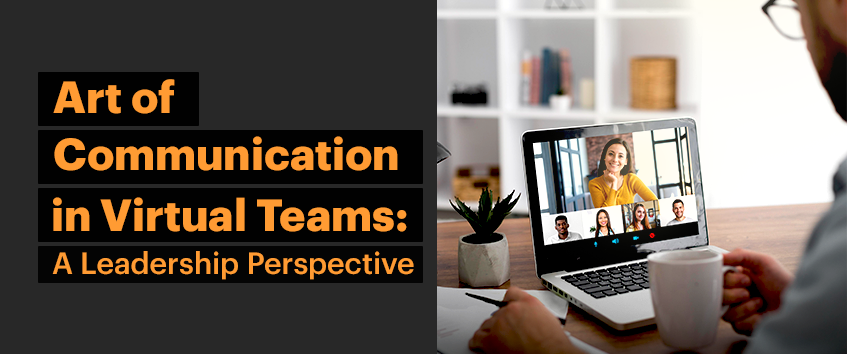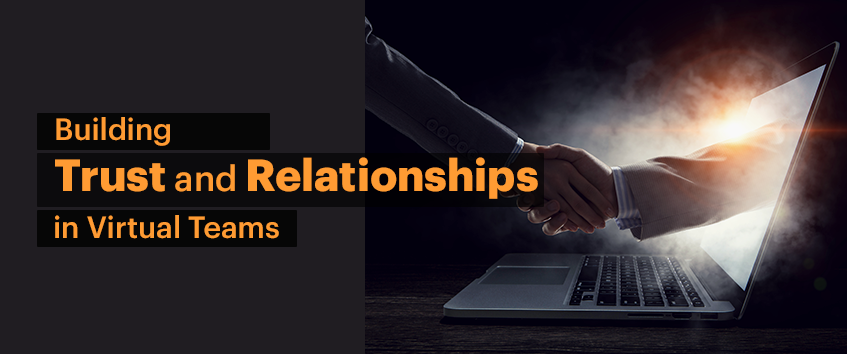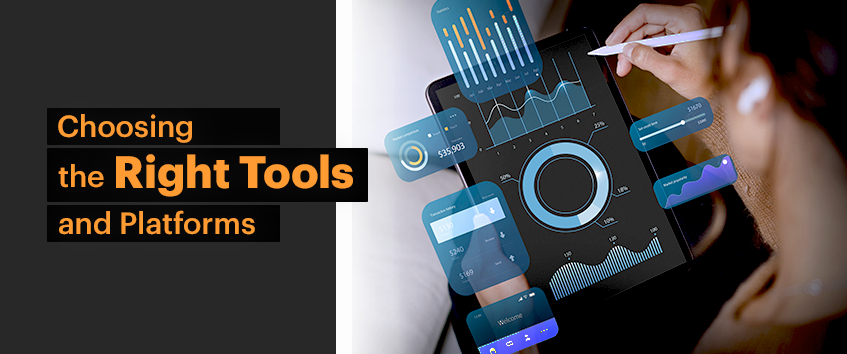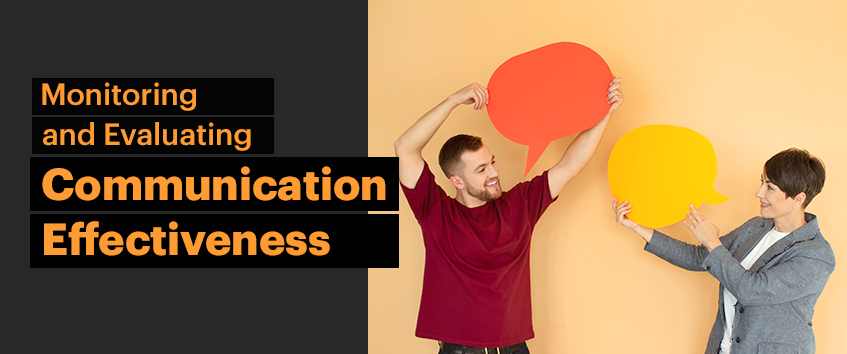Art of Communication in Virtual Teams: A Leadership Perspective
October 17, 2024
In the dynamic and fast-paced world of digital marketing, the rise of virtual teams has become a cornerstone of many agencies’ operational strategies. Virtual collaboration offers numerous advantages, including cost-effectiveness, access to a diverse pool of global talent, and the flexibility to operate beyond geographical boundaries. However, while the benefits are compelling, the challenges that come with managing virtual teams are equally significant. To ensure the success of virtual teams, particularly within the context of a digital marketing agency in Kochi, these challenges must be addressed with careful planning and proactive strategies.
Time Zone Differences
One of the most prominent challenges faced by virtual teams is the issue of time zone differences. With team members spread across different parts of the world, coordinating schedules can be a daunting task. Meetings may need to be scheduled at inconvenient times for some team members, and the overlap in working hours may be minimal, leading to delays in communication and project progression.
To mitigate the impact of time zone differences, it is essential to establish clear communication protocols that everyone in the team adheres to. Utilising project management tools can help keep everyone on the same page, regardless of when they log in. Such tools allow tasks to be assigned, deadlines to be set, and progress to be tracked in real-time, enabling asynchronous collaboration. Additionally, tools like Slack or Microsoft Teams can facilitate quick communication through instant messaging, helping to bridge the gap when team members are not online at the same time. It’s also advisable to identify a small window of overlap in working hours where the entire team can come together for crucial discussions, ensuring that everyone is aligned on key objectives.
Language Barriers
Another significant challenge that can arise within virtual teams is language barriers. In a global team, English may be the common language, but proficiency levels can vary. Moreover, differences in accents, idioms, and colloquial expressions can lead to misunderstandings or misinterpretations of key information.
To overcome language barriers, it’s important to promote the use of clear, concise, and simple language in all communications. Avoiding jargon and complex phrases can help ensure that everyone understands the message. When necessary, translation tools like Google Translate can be utilised to assist team members who may struggle with certain languages. However, relying solely on translation tools is not enough; fostering a culture of openness and encouraging team members to ask questions if they’re unsure about something is crucial. This approach helps prevent misunderstandings and ensures that everyone is on the same page.
Cultural Nuances
Cultural diversity is one of the greatest strengths of virtual teams, but it can also be a source of challenges. Different cultures have varying norms when it comes to communication styles, decision-making processes, and work ethics. For instance, some cultures may prioritise direct communication, while others may value a more indirect approach. Similarly, expectations around punctuality, hierarchy, and individual vs. collective work can vary widely.
Understanding and respecting these cultural differences is key to fostering a harmonious and productive virtual team environment. Promoting cultural awareness through training and open dialogue can help team members appreciate and navigate these differences. Encouraging a diverse and inclusive team culture where everyone’s perspective is valued can also lead to more innovative solutions and a stronger sense of team cohesion. It’s important for team leaders to set the tone by demonstrating respect for cultural differences and modelling inclusive behaviour in all interactions.
Virtual teams are increasingly becoming the norm in the digital marketing industry, offering agencies flexibility and global reach necessary to thrive in today’s market. However, the success of these teams hinges on the ability to navigate challenges such as time zone differences, language barriers, and cultural nuances. By addressing these challenges proactively and with sensitivity, agencies can build virtual teams that are not only effective and productive but also capable of delivering exceptional results. Emphasising clear communication, cultural awareness, and inclusive practices will go a long way in ensuring the success of virtual collaboration efforts, ultimately driving the agency towards greater success in the digital landscape.
Building Trust and Relationships in Virtual Teams

Trust, the cornerstone of any successful team, becomes even more critical in virtual environments where face-to-face interactions are limited. Let’s explore strategies for building trust and relationships within virtual teams, specifically within the context of digital marketing agencies in Kochi.
Fostering a Sense of Community
Creating a sense of community within a virtual team can be challenging due to the lack of physical proximity, but it is a crucial element in building trust and encouraging collaboration. A strong community helps team members feel connected and supported, which can lead to increased productivity and job satisfaction. Here are some strategies that can help foster a sense of community in virtual teams:
Virtual Team-Building Activities: Organising online team-building activities is a great way to bring team members together in a fun and engaging way. Activities like virtual escape rooms, online trivia games, or even virtual cooking classes can create opportunities for team members to bond over shared experiences. These activities not only provide entertainment but also help team members develop better communication and problem-solving skills.
Online Social Events: In addition to formal team-building activities, hosting virtual social events can provide more informal opportunities for team members to connect. Virtual happy hours, coffee breaks, or themed social events can give team members a chance to relax and engage in casual conversation. These social interactions can help break down barriers and build rapport, making team members feel more comfortable working together.
Encouraging Casual Interactions: Promoting casual communication channels, such as dedicated team messaging apps or virtual watercooler spaces, can also foster informal interactions among team members. Encouraging team members to share non-work-related content, such as personal milestones or weekend plans, can help create a more personal connection and build a stronger sense of community.
Building Trust Through Transparency
Trust is the foundation of any successful team, and in a virtual environment, transparency plays a key role in establishing and maintaining that trust. When team members feel that information is being shared openly and honestly, they are more likely to trust each other and feel connected to the team’s goals. Here’s how transparency can be cultivated in virtual teams:
Open Communication: Encouraging open communication about project goals, timelines, and challenges is essential. Regular updates, whether through virtual meetings, emails, or project management tools, help ensure that everyone is on the same page. This level of openness helps to prevent misunderstandings and builds a culture of trust where team members feel confident that they are being kept informed.
Accountability and Integrity: Trust is also built through accountability and integrity. Team members should be encouraged to take responsibility for their actions and deliver on their commitments. When team members consistently demonstrate reliability, it reinforces trust within the team. Leaders can set the tone by modelling these behaviours and creating an environment where honesty and accountability are valued.
Recognizing and Appreciating Individual Contributions

Recognition and appreciation are powerful tools for building a positive and supportive team environment. In virtual teams, where face-to-face interaction is limited, it’s even more important to make an effort to acknowledge individual contributions. Here are some ways to recognize and appreciate team members in a virtual setting:
Providing Positive Feedback: Regularly providing positive feedback, both privately and publicly, can boost morale and motivation. Whether through a shout-out in a team meeting, a recognition post in a team chat, or a personalised email, acknowledging effort and hard work makes team members feel valued.
Celebrating Successes: Taking the time to celebrate team successes, whether big or small, helps reinforce a sense of achievement and team spirit. Virtual celebrations, such as a special meeting to commemorate a project completion or an online awards ceremony, can help bring the team together and strengthen relationships.
Leveraging Technology for Effective Communication in Digital Marketing Teams
In the fast-paced and ever-evolving field of digital marketing, effective communication is the backbone of successful teamwork. As virtual teams become more prevalent, particularly in digital marketing agencies in Kochi, technology plays an increasingly critical role in enabling seamless communication and collaboration. The right combination of tools, protocols, and training can significantly enhance productivity, efficiency, and overall team performance. This blog post explores strategies for leveraging technology to optimise communication within digital marketing teams.
Choosing the Right Tools and Platforms

The foundation of effective communication within virtual teams lies in selecting the appropriate tools and platforms. With a plethora of options available, it is essential to choose tools that align with the team’s specific needs and workflow. Here are some of the most commonly used tools that can support communication and collaboration in digital marketing teams:
Video Conferencing Software: Tools like Zoom, Microsoft Teams, and Google Meet have become indispensable for virtual teams. They enable face-to-face communication, which is vital for building rapport, fostering stronger connections, and facilitating in-depth discussions. Whether it’s a team meeting, client presentation, or brainstorming session, video conferencing tools bring a human element to virtual interactions that can often be lost in text-based communication.
Instant Messaging Apps: Real-time communication is crucial for quick questions, updates, and informal discussions. Apps like Slack, Microsoft Teams, and WhatsApp provide an instant messaging platform that allows team members to stay connected throughout the day. These tools are particularly useful for addressing issues that require immediate attention or for maintaining ongoing communication without the need for formal meetings.
Document Sharing Platforms: Collaboration on documents, spreadsheets, and presentations is made easy with tools like Google Drive, Dropbox, and OneDrive. These platforms enable team members to work together in real-time, making edits, providing feedback, and ensuring that everyone has access to the most up-to-date information. Document sharing platforms are essential for maintaining version control and ensuring that all team members have access to necessary resources.
Maximising Technology Usage

To fully leverage the benefits of these tools, it is crucial to establish clear communication protocols and provide adequate training to team members. Effective use of technology requires not just the right tools but also a well-defined framework for how those tools should be used. Here’s how digital marketing agencies in Kochi can maximise the usage of communication technology:
Setting Up Clear Communication Protocols: Defining how and when to use different communication channels is essential for smooth operations. For instance, establishing guidelines on when to use instant messaging for quick updates versus when to schedule a video call for more complex discussions can help streamline communication. Additionally, setting expectations for response times and meeting attendance ensures that all team members are on the same page and can contribute effectively.
Training Team Members on Tool Usage: Even the most advanced tools are only as good as the people using them. Providing comprehensive training on how to use the chosen tools effectively can prevent misunderstandings and ensure that all team members are comfortable with the technology. This training should cover not only the technical aspects of the tools but also best practices for communication and collaboration in a virtual environment.
Ensuring Accessibility and Compatibility: Ensuring that all team members have access to the necessary technology and that the tools are compatible with their devices is critical for seamless collaboration. This includes checking that software is up to date, ensuring that all team members have reliable internet connections, and providing support for any technical issues that may arise. Accessibility and compatibility are foundational to ensuring that technology enhances, rather than hinders, communication.
Avoiding Over Reliance on Technology
While technology is a powerful enabler of communication, it’s important to avoid overreliance on it. Human connection remains a crucial element of team dynamics, particularly when it comes to building trust, fostering collaboration, and resolving conflicts. Here’s how to balance virtual and in-person interactions:
Scheduling Regular Face-to-Face Meetings: Whenever possible, scheduling in-person meetings can strengthen relationships and build trust within the team. For teams that are fully remote, periodic in-person gatherings or retreats can provide valuable opportunities for team bonding.
Organizing Team-Building Activities: Virtual team-building activities, as well as in-person events, can help reinforce connections among team members. These activities offer a break from work-related tasks and allow team members to interact on a more personal level, which is vital for creating a cohesive team environment.
Connecting on a Personal Level: Taking time to connect with team members on a personal level, even in a virtual setting, can go a long way in building strong relationships. Simple actions like checking in with colleagues, acknowledging personal milestones, or sharing non-work-related stories can help humanise virtual interactions and strengthen team bonds.
Overcoming Cultural Barriers in Virtual Teams
In today’s increasingly globalised world, virtual teams have become the norm, especially in the digital marketing industry. These teams often consist of members from diverse cultural backgrounds, each bringing a wealth of perspectives, experiences, and insights. While this diversity is a valuable asset, it also presents unique challenges related to communication, collaboration, and cultural misunderstandings. For digital marketing agencies in Kochi, overcoming these cultural barriers is crucial to ensuring the success and cohesion of virtual teams. This guide explores strategies for understanding and addressing cultural differences to create a more harmonious and productive work environment.
Understanding Cultural Differences
The first step in overcoming cultural barriers within virtual teams is to gain a deep understanding of the cultural differences that exist among team members. Recognizing and appreciating these differences can help prevent misunderstandings and foster a culture of respect and inclusivity.
Researching Cultural Norms and Values: One of the most effective ways to understand cultural differences is by familiarising yourself with the cultural norms, values, and beliefs of team members. This can involve researching cultural etiquette, communication styles, and decision-making processes specific to each culture represented within the team. Understanding these norms can help you navigate interactions more effectively, ensuring that your communication is both respectful and appropriate. For instance, some cultures may value direct communication, while others may prefer a more indirect approach. Being aware of these preferences can prevent miscommunication and help build stronger relationships within the team.
Being Mindful of Cultural Sensitivities: Cultural sensitivities are an important consideration in any diverse team. It is essential to be aware of the potential for cultural misunderstandings and to avoid making assumptions or generalisations based on stereotypes. Each team member’s cultural background may influence their work style, communication preferences, and interpersonal interactions. By showing respect for different cultural practices and beliefs, and by being mindful of how your own cultural background may influence your interactions, you can create a more inclusive and understanding environment.
Avoiding Cultural Stereotypes: Stereotypes can be damaging and lead to misunderstandings, prejudice, and a breakdown in team cohesion. It is crucial to avoid making broad generalisations about entire cultural groups. Instead, strive to see each team member as a unique individual with their own experiences and perspectives. By focusing on individual contributions rather than cultural assumptions, you can foster a more respectful and inclusive team dynamic.
Promoting Cultural Awareness
Once cultural differences are understood, the next step is to actively promote cultural awareness within the team. This involves creating opportunities for cross-cultural exchanges and celebrating the diversity that each team member brings to the table.
Encouraging Cross-Cultural Exchanges: One of the most effective ways to promote cultural awareness is by encouraging cross-cultural exchanges within the team. This can involve organising virtual cultural events where team members can share aspects of their culture, such as traditional foods, music, or customs. Additionally, sharing personal stories or participating in cross-cultural training programs can help team members learn from each other and build stronger connections. These exchanges not only enhance cultural awareness but also create a sense of unity and belonging within the team.
Celebrating Diversity: Recognizing and celebrating the diversity within your team is essential for fostering an inclusive environment. This can be done by acknowledging cultural holidays, highlighting cultural contributions, and creating opportunities for team members to showcase their cultural backgrounds. By celebrating diversity, you send a clear message that all cultures are valued and respected within the team. This not only boosts morale but also encourages team members to bring their whole selves to work, leading to more creative and innovative solutions.
Respecting Different Perspectives: Respecting different perspectives is key to successful collaboration in a culturally diverse team. Encourage open and respectful dialogue where team members feel comfortable sharing their views and experiences. It’s important to avoid imposing your own cultural values or beliefs on others and instead strive to find common ground. By being open to different perspectives, you can foster a collaborative environment where all voices are heard and respected.
Fostering a Positive Virtual Work Environment

In the increasingly digital world, creating a positive and supportive virtual work environment is crucial for the success of any team, particularly in the dynamic field of digital marketing. For agencies in Kochi, where remote work has become the norm, fostering a culture that promotes diversity, inclusion, work-life balance, and mental health support is essential. These elements contribute to a thriving and productive workplace where employees feel valued, motivated, and engaged. This guide explores strategies for building a positive virtual work environment that can drive success and well-being in digital marketing teams.
Creating a Supportive and Inclusive Culture
A supportive and inclusive culture is the foundation of a positive work environment. When team members feel respected and valued for their unique contributions, they are more likely to be engaged and committed to their work.
Promoting Diversity and Inclusion: Diversity and inclusion are key drivers of innovation and creativity within a team. By embracing diverse perspectives and experiences, digital marketing agencies can foster an environment where new ideas flourish, and challenges are approached from multiple angles. To promote diversity and inclusion, agencies should actively recruit team members from various backgrounds, provide training on cultural awareness, and ensure that all voices are heard and respected. Celebrating the unique contributions of each team member helps create a sense of belonging and reinforces the idea that diversity is a strength.
Addressing Biases and Discrimination: To maintain a positive and respectful workplace, it is essential to address biases and discrimination head-on. This includes implementing clear policies and procedures to prevent discriminatory behaviour, providing regular training on unconscious bias, and creating a safe space where employees can report concerns without fear of retaliation. By actively addressing these issues, agencies can build a culture of respect and fairness, where all team members feel valued and supported.
Creating a Sense of Belonging: A sense of belonging is crucial for building a positive work environment, especially in a virtual setting where physical distance can lead to feelings of isolation. Agencies can foster a sense of belonging by organising regular team-building activities, encouraging social interactions through virtual coffee breaks or happy hours, and recognizing individual contributions. Celebrating successes and milestones, both personal and professional, helps team members feel connected and valued.
Encouraging Work-Life Balance
Maintaining a healthy work-life balance is essential for preventing burnout and ensuring long-term productivity and well-being.
Setting Realistic Expectations: Clear communication of expectations is key to preventing burnout in a virtual work environment. Agencies should set realistic goals and avoid overloading employees with excessive workloads. By providing clear guidelines on priorities and deadlines, team members can manage their time effectively and avoid the stress of unrealistic expectations.
Promoting Flexible Work Arrangements: Flexibility is one of the key advantages of remote work. Offering flexible work arrangements, such as adjustable hours or the ability to work from different locations, allows employees to balance their professional responsibilities with personal commitments. This flexibility can lead to increased job satisfaction and a better work-life balance, ultimately boosting productivity.
Encouraging Time Off and Breaks: Encouraging employees to take regular breaks and time off is essential for preventing burnout and maintaining productivity. Agencies should promote the importance of disconnecting from work during off-hours and support employees in taking vacations or mental health days when needed. Regular breaks help refresh the mind, leading to better focus and creativity when employees return to work.
Providing Mental Health Support

Mental health is a critical component of overall well-being, and supporting employees’ mental health is essential for fostering a positive work environment.
Offering Access to Mental Health Resources: Providing access to mental health resources, such as counselling services, therapy sessions, or wellness programs, can help employees cope with stress and maintain their mental well-being. Agencies can partner with mental health professionals or offer digital resources to support employees in managing their mental health.
Creating a Stigma-Free Environment: A stigma-free environment where employees feel comfortable discussing mental health concerns is vital for fostering a supportive workplace. Agencies should encourage open conversations about mental health, provide training to reduce stigma, and ensure that employees know they can seek help without judgement.
Encouraging Self-Care: Self-care is essential for maintaining overall well-being and productivity. Agencies can promote self-care by encouraging employees to prioritise activities like exercise, healthy eating, and sufficient sleep. Providing resources or hosting wellness challenges can motivate employees to adopt healthier habits that contribute to their well-being.
Monitoring and Evaluating Communication Effectiveness

To maintain strong communication within virtual teams, it’s essential to regularly gather feedback from team members. This can be achieved through surveys, one-on-one meetings, or informal feedback sessions, providing insights into areas where communication may need improvement. Additionally, conducting communication audits is a valuable tool for identifying specific issues, such as bottlenecks or ineffective communication channels. By thoroughly assessing communication patterns and tools, agencies can pinpoint areas that require enhancement. Once feedback and audit results are in, identifying and addressing areas for improvement—whether through refining communication channels, offering additional training, or adjusting protocols—is crucial for keeping the team aligned and efficient.
Adapting to Changing Circumstances
In the dynamic world of digital marketing, flexibility and adaptability are essential. Virtual teams must be ready to respond to new challenges and opportunities, whether that involves adopting emerging technologies, restructuring teams, or adjusting communication strategies. Staying updated on the latest communication trends and best practices is equally important. This can be achieved by attending industry conferences, reading relevant publications, or engaging in online communities. Ultimately, the ability to be flexible and adaptable—being open to change, experimenting with new approaches, and adjusting strategies as needed—is vital for maintaining a competitive edge and ensuring the ongoing success of virtual teams.
Ultimately, the ability to be flexible and adaptable—being open to change, experimenting with new approaches, and adjusting strategies as needed—is vital for maintaining a competitive edge and ensuring the ongoing success of virtual teams, especially for those aiming to be recognized as the best digital marketing company in Kochi.
